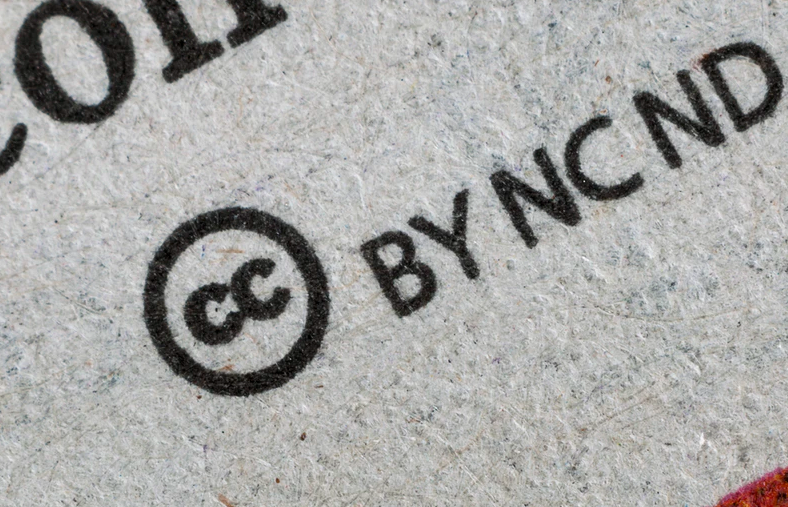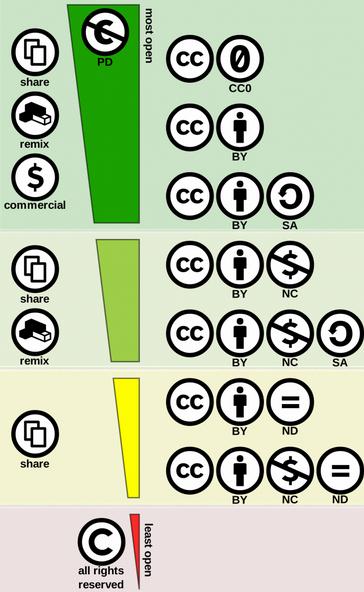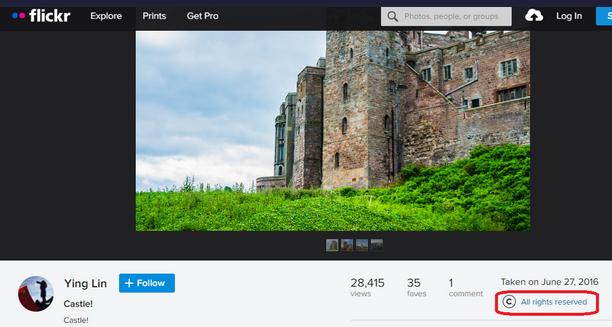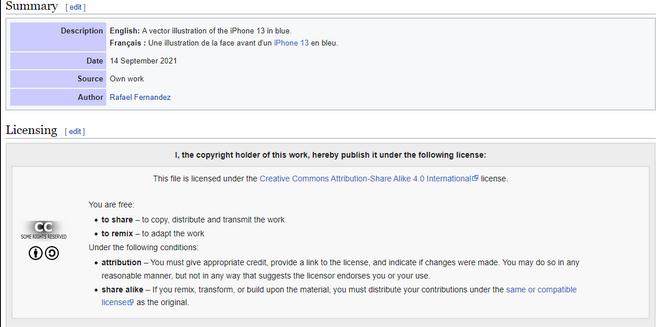Incorporating someone else’s work such as music or graphics in your work may be against copyright law and lead to serious repercussions & damages. As such, it is essential that you familiarize yourself with the copyright law and different public copyright licenses that enable free distribution of otherwise protected work including the Creative Commons (CC) License.
The copyright law aims to balance the rights of owners with the rights of the public to use that work without attaining permission from the owner or paying compensation for that work. Under the copyright law, several public copyright licenses exist which allow the authors to share their work with others and grant them the right to use, build upon, or share their work.
In this article, we will cover everything there is to know about the Creative Commons License including discussing the several types of this license, four rights and the three layers of licenses among other important areas of discussion. Let’s dive right into this post without further ado.
What is the Creative Commons License?
If you have made a graphic design or written an academic research paper, your work will usually be copyrighted by default. What this means is that nobody else is allowed to distribute or reproduce your work without your permission. But, if you waive this copyright, your work will be registered in the public domain, and therefore, anyone can use your work. However, this is where the CC license comes in by giving the rightful owners plenty of different options.
The not-for-profit, Creative Commons, organization aims to improve educational access and increasing the range of works accessible to others to incorporate and build-upon to produce even better work, at times; all of this being legal at the same. As such, with the Creative Commons (CC) license, an author has the ability to specify how and where their work is used while still retaining copyright.
License Design
The licenses are designed in a way in which there are certain ‘baseline’ features and have important common features. Authors or licensors can then choose to grant additional permissions on top while deciding how and where their work is going to be used. However, all CC licenses ensure that the authors or licensors receive credit for their work. Moreover, these licenses work all around the world and are meant to last until the expiry of the copyright of the work itself.
Three Layers of Licenses
The licenses have three layers: legal code, human readable, and machine readable.
The legal code is in the language and text formats that lawyers and law specialists would know, understand, and evaluate. However, this type of text format and language is not something a layman would understand, and since most creators, educators, and authors are not law specialists, licenses by the Creative Commons are also available in the Common Deed version i.e., the human readable. It is user-friendly and easy to understand and summarizes the important terms and conditions. And then lastly, the machine-readable layer highlights the fact that different software play a significant role in the distribution of work. As such, CC provided a type of license that different technologies can recognize and understand. The CC Rights Expression Language (CC REL) is used to achieve this.
And, combining the three layers of license together, allow the three important stakeholders to understand the license: creators, users, and web.
Four Rights
As we discussed above, the Creative Commons license all have baseline features, and on-top of these baseline features, authors can choose to have additional features which will allow them to specify how their work is used. These additional specifications are covered in the four rights of Creative Commons (CC) licenses.
| Image | Right | Details |
| Image: link
Alt-Text: Icon for Attribution (BY). |
Attribution (BY) | Under Attribution (BY), licensees are permitted to copy, distribute, display, perform, and build-upon works only if the author is given credit in the way specified under the CC license. Version 2.0, all CC licenses require attribution and contain this feature by default. |
| Image: link
Alt-Text: Icon for Share-alike (SA). |
Share-alike (SA) | Under Share-alike (SA), licensees are permitted to distribute derivative (build-upon) work under a license like the one which is for the original work. |
| Image: link
Alt-Text: Icon for Non-Commercial (NC). |
Non-Commercial (NC) | Under Non-Commercial (NC), licensees are permitted to copy, distribute, display, perform, and build-upon and remix works only for non-commercial uses. |
| Image: link
Alt-Text: Icon for No Derivative Works (ND). |
No Derivatives Works (ND) | Under No Derivatives Works (ND), licensees are permitted to copy, distribute, perform, and display only original work (i.e., verbatim) and no derivative or remix works are allowed. However, under CC 4.0, derivative work is allowed but shall not be shared. |
Commonly used CC licenses
| Name | Abbreviation | Icon | Attribution required | Remix allowed | Commercial use allowed |
| No Rights Reserved | CC0 | Image: link
Alt-Text: Icon for CC0 |
No | Yes | Yes |
| Attribution | BY | Image: link
Alt-Text: Icon for BY |
Yes | Yes | Yes |
| Attribution-ShareAlike | BY-SA | Image: link
Alt-Text: Icon for BY-SA |
Yes | Yes | Yes |
| Attribution-Noncommercial | BY-NC | Image: link
Alt-Text: Icon for BY-NC |
Yes | Yes | No |
| Attribution-NonCommercial-ShareAlike | BY-NC-SA | Image: link
Alt-Text: Icon for BY-NC-SA |
Yes | Yes | No |
| Attribution-NoDerivatives | BY-ND | Image: link
Alt-Text: Icon for BY-ND |
Yes | No | Yes |
| Attribution-NonCommercial-NoDerivatives | BY-NC-ND | Image: link
Alt-Text: Icon for BY-NC-ND |
Yes | No | No |
The table above lists down the seven most used Creative Commons licenses with the four rights being used in different ways. However, as the name of the table implies, these are only the 7 most used licenses as there are many more with different combinations of the four rights being used.
Moreover, each of these licenses differ in allowing free cultural works and also whether each license meets the OKF ‘Open Definition’. As such, it is important to research thoroughly before using any of the Creative Commons License. In addition, the licenses by CC provide a great amount of flexibility to authors in terms of choosing the type of copyright they want their work to be under i.e., CC license.
The image below illustrates the spectrum of the CC license.
“Creative Commons License Spectrum” by Shaddim.
Practical Examples
We have now discussed the four basic rights of Creative Commons (CC) licenses, the seven most used CC licenses, the three layers, and generally about the CC licenses. Let’s see the CC licenses in practice so that you can truly understand how CC licenses actually work.
Flickr
In the image above, you can see that the marked area reads “All rights reserved”. This means that no rights have been waived by the creator of the work i.e., no one else has the right to copy, distribute, perform, display, or make derivative works other than the author itself.
In the image above, you can see—contrary to the first image—the marked area reads “Some rights reserved”. As this implies, this means that the creator does not retain all the rights in contrast to the one above. Once you click on the hyperlink, you will be given further details about this license. In this instance, this image is licensed under Attribution-NoDerivatives (CC-ND) which means you are allowed to share i.e., copy and distribute this content anywhere, even for commercial use. However, you must give attribution i.e., credit to the creator, and in addition, no derivative work is allowed so no remixes, transformations, and build-upon work is allowed.
Wikipedia
When you are intended to use pictures from Wikipedia, it is essential that you know what type of license the picture is under. In this example of an image from the iPhone 13 Wikipedia page, once you click on more details in the picture, you will find the detailed license information.
This image is under the Attribution-ShareALike license and what is allowed and not allowed is given under in terms of sharing, remixes, attributions, and share alike.
Conclusion
The Creative Commons (CC) licenses are essential for the usage and redistribution of work by other creators and play a very important role in the content industry. Without the CC licenses, we would have no structure or framework to control the copyrights of creators. As such, the existence of CC licenses is imperative.
Considering this, as a user of such content, you must be aware of these licenses and the rights each carries to avoid any violation of copyright law and the consequences. This article provides a general overview of the CC Licenses.




